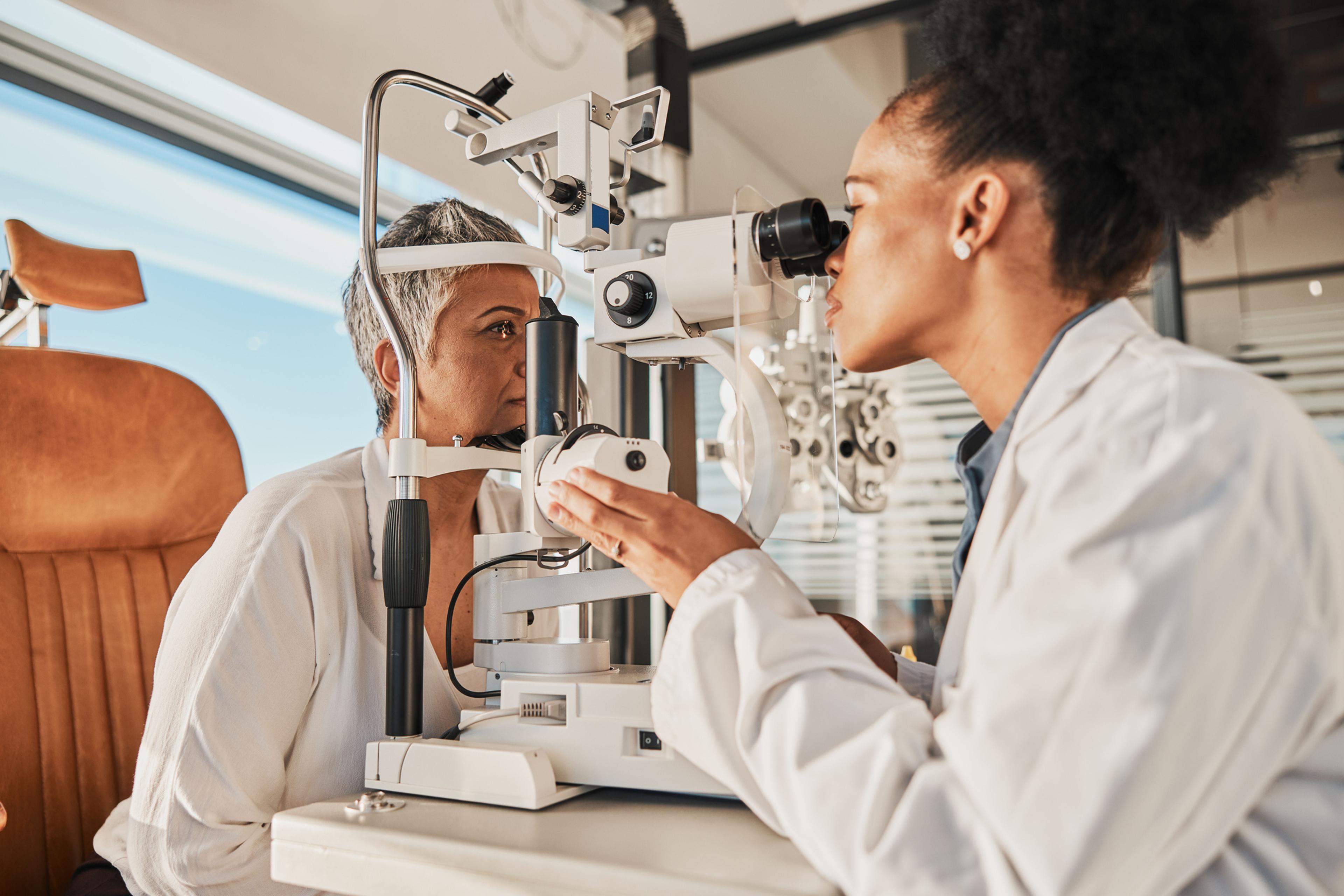How Eye Exams Can Detect Early Signs of Diabetes

Blue Daily
| 4 min read

Nearly 1.4 million Americans are expected to be diagnosed with diabetes this year. However, if caught early enough, the onset of type 2 diabetes can be delayed or even reversed.
Eye issues in people with diabetes are common.
One in three people who have diabetes and are over the age of 40 have signs of diabetic retinopathy, one of the most common vision issues for people with diabetes. Left untreated, both diabetes and diabetic retinopathy can cause permanent health issues – and eventually serious vision problems.
The good news: the earlier you catch diabetic retinopathy – and diabetes – the better your outcomes will be. Experts say finding and treating diabetic retinopathy early can reduce the risk of blindness by 95%, according to the National Institutes of Health.
How diabetes affects the eyes
Diabetes is a chronic condition that affects how your body processes food into energy. When a person has diabetes, their body either doesn’t produce enough insulin or doesn’t produce any at all, leading to unregulated blood sugar. As a result, an individual managing this condition must ensure their body has enough insulin to compensate.
There are several types of diabetes:
- Type 1 diabetes was previously known as juvenile diabetes because it usually develops in children and young adults. But Type 1 can occur at any age. With this form, the body cannot produce insulin at all.
- Type 2 diabetes, in which the body cannot produce enough insulin or the body’s insulin is unable to store excess blood sugar properly. Although there is no cure, Type 2 can be managed with exercise, diet and medications (if prescribed). Type 2 diabetes can often be prevented with healthy lifestyle changes.
- Prediabetes: A diagnosis for this condition is given when blood sugar levels are higher than normal, but not yet high enough to be diagnosed Type 2.
- Gestational diabetes occurs in pregnant women when their bodies are not producing enough insulin, or they are unable to store excess blood sugar. It’s typically diagnosed around week 24 and is subject to all women regardless of their diabetic history.
Over a short period of time, higher blood sugar can cause blurry vision. People who are changing their diabetes medications or treatment plans may experience blurred vision as their bodies adjust.
However, over a longer period of time, high blood sugar can cause serious issues. This can begin during prediabetes, the condition in which your blood sugar is elevated but not high enough to be a diagnosis of diabetes.
Elevated blood sugar levels can begin to damage the blood vessels in the back of the eyes. These blood vessels may leak fluid, causing swelling. Additionally, newer and weaker blood vessels may start to grow, which can bleed into the middle of the eye. These growths can cause scarring or dangerously high blood pressure inside the eye.
Eye conditions affecting people with diabetes
People with diabetes are at a higher risk for developing eye issues, including:
- Diabetic retinopathy: In this condition, damaged blood vessels affect the inner lining at the back of the eye. In worse stages of the disease, blood vessels grow on the surface of the retina in a way that can obscure vision.
- Macular edema: The macula is a part of the retina. Uncontrolled diabetes can cause the macula to swell, eventually leading to vision loss and blindness. This condition often develops in people who have diabetic retinopathy.
- Cataracts: This disease affects the lens in the eye that helps provide sharp vision. People with diabetes are more likely to develop cataracts at an earlier age, as higher blood sugar levels can cause deposits on the lens.
- Glaucoma: This disease causes damage to the optic nerve. Slowly, people lose their side vision. If not treated early, vision loss and blindness are possible.
How often to see an eye doctor
It’s important to visit the eye doctor every year if you have vision issues, if you use glasses or contacts or if you have additional risk factors including diabetes, high blood pressure or a family history of eye disease. Depending on your eyesight, eye doctors may want to check on your vision more than once a year.
If you have no symptoms or issues with your eyes, the American Academy of Ophthalmology recommends checking with an eye doctor every two years. That pattern may increase after age 65.
To find a vision provider, Blue Cross Blue Shield of Michigan and Blue Care Network members can login to their online member account at bcbsm.com to find a doctor.
Related:





